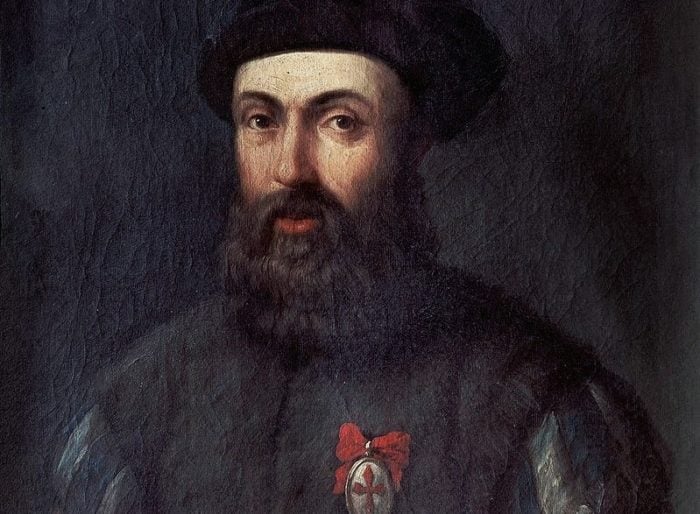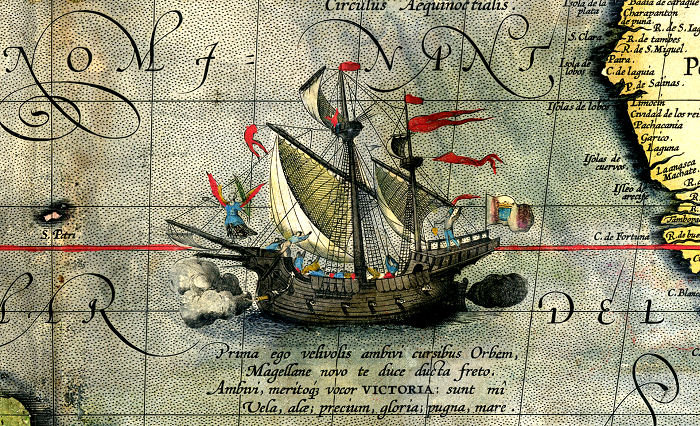

Ferdinand Magellan had eight Greek sailors in his crew when the great Portuguese explorer circumnavigated the Earth for the first time in history.
In a new book entitled “Greek Sailors on the First Circumnavigation of the Earth”, author Pedro Olalla tells the story of the Greek seamen who joined Magellan on that ambitious journey.
It was about 500 years ago when the great explorer attempted the perilous expedition. In the only ship that managed to return three years later, some of the survivors were Greeks.
Among them was the navigator who brought it back to port and documented his unprecedented route which was a great leap for human history.
The Spanish philhellene author
Spanish Hellenist author Pedro Olalla (born in 1966) is a professor, filmmaker and photographer who has written several books on Greek modern and ancient history, culture and archaeology.
His literary and audiovisual works study and promote Greek culture. They are distinguished for the strong personal idiom of the creator, which is combined with literary, scientific and artistic elements.
He is also Knight of the Order of Civil Merit in Spain and Associate Member of the Center for Greek Studies at Harvard University.
In his current book, Olalla tells the unknown story of the Greek sailors who joined Magellan in the first circumnavigation of the Earth
The book also includes the text of the lecture that the Spanish Hellenist and author delivered in Greek at the historic “Lodge of Spain” for the Knights of St. John in Rhodes, on the occasion of the unveiling of the monument in honor of Greek sailors.
The Spanish embassy also published the log book of the expedition translated into three languages on the occasion of the unveiling of the monument.
The lecture was commissioned by the Spanish Embassy in Greece and the Cervantes Institute of Athens and was based on the research of Spanish and Greek historians.
The Greek sailors who explored with Magellan
On September 20, 1519, five ships departed from the Spanish port of Sanlucar de Barrameda for the most fascinating voyage in the history of the modern world.
The Portuguese seafarer Ferdinand Magellan embarked on an ambitious mission on behalf of Spain to discover a short route to the Spice Islands, along with 240 adventurous sailors.
Very few know that in the end of the first journey around the planet there were eight Greeks, and that the pilot of ‘Victoria’, the only ship that managed to return, was Greek.
His name was Francisco Albo and he was from Chios island. The log book he kept is one of the most valuable documents in the history of navigation.
Albo’s log book documents the voyage, the unknown places the seamen encountered, the unprecedented adventures they lived through as the first humans to cross all of the Earth’s meridians.
Magellan was killed by indigenous soldiers in the Philippines, but eighteen men returned alive, including five Greeks.
Nine Greek names are registered in the list of seafarers kept in the Seville Archives:
Miguel de Rodas, Felipe de Rodas, Miguel Sanchez de Rodas from Rhodes, Francisco Albo, Simone de Axio, Antonio de Axio from Chios, Nicolao Griego, Juan Griego from Nafplio and Matteo de Corfo from Corfu.
Eventually, eight Greek sailors boarded for the Magellan expedition, Olalla wrote. Francisco Albo, who returned ‘Victoria’ to Seville, was very important.
Albo, along with second-in-command of the expedition Juan Sebastian Elcano, appeared before Emperor Charles I of Spain to inform him of the success of the three-year voyage.
Among the Greeks sailors who joined Magellan, Miguel de Rodas was awarded the honor of Knight of the Order of St. James and Grand Pilot of His Majesty.
He was also commissioned to take on the secret chartography of the emperor and the responsibility of organizing the next missions to the New World.

The Greek contribution to nautical missions
“The contribution of the Greeks to the exploratory missions of that era is important”, Olalla wrote in his book.
“Along with the renaissance in sciences, there was a maritime renaissance with the rediscovery of maritime knowledge not only by the classical and Alexandrian maritime tradition of the Greeks, but also from older times, such as the Minoan era,” another part of the book says.
“From the 13th century and on, when the Latins merged with the Greeks, there was a nautical renaissance that allowed for great explorations in a new, more dynamic way,” Olalla wrote.
Ferdinand Magellan
Born February 4, 1480 into a noble Portuguese family, Ferdinand Magellan saw his parents die while still a boy and he became a court page in Lisbon.
In 1505, he joined the fleet of the Portuguese viceroy to the Indies, and spent the following years in expeditions in India and Africa.
In 1511, he was with the fleet that conquered Malacca (on the Malay Peninsula), and the Portuguses gained control of the most important trade routes in the region. He also explored the Spice Islands).
The following year, Magellan returned to Lisbon, and in 1513 he was wounded during an expedition to Morocco, which left him with a permanent limp.
In 1517 he had a disagreement with the Portuguese king and went to Spain asking for the Spanish emperor’s support for an expedition to reach the Moluccas by sailing westwards.
The Spanish wanted a share in the spice trade from the Moluccas, but the Portuguese controlled the eastwards route round southern Africa.
Magellan convinced the Spanish emperor to follow the westward route and in September 1519 set out with a fleet of five vessels, four carracks and one caravel, and about 270 men.
There were eight Greek sailors among Magellan’s ship crews and the expedition had many difficulties from the time of departure.
The weather was rough, there was a mutiny in one of the ships, a lack of provisions, sailors suffered from scurvy, and the unknown waters made for a perilous mission.
In spite of all the obstacles, Magellan managed to cross the Atlantic and navigate through the straits at the southern point of South America which were later named after him.
From there, with only three ships left, Magellan sailed on into the Pacific, but the lack of supplies led to many deaths from starvation and scurvy.
After three months the mission reached an island, probably Guam, in the western Pacific. From there they sailed to today’s Philippines.
Once there, Magellan became involved in a battle between two rival local chieftains and was killed. It was April 27, 1521.
The only ship that remained was ‘Victoria’ with Francisco Albo at the helm. It eventually reached Spain in September 1522, having completed the first ever circumnavigation of the globe.
